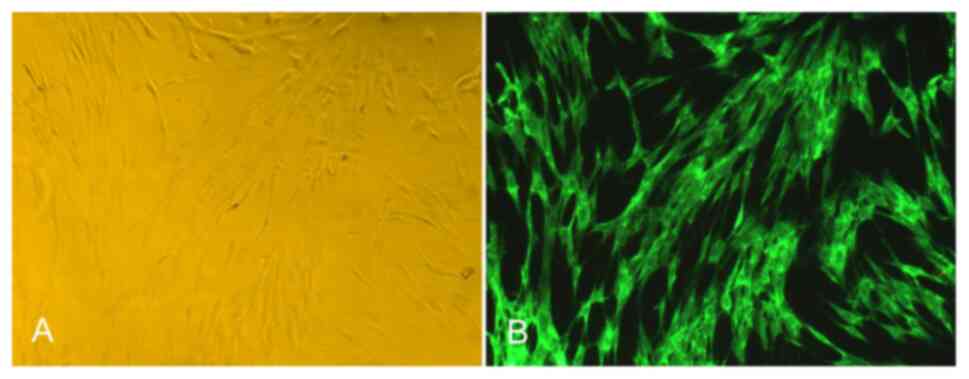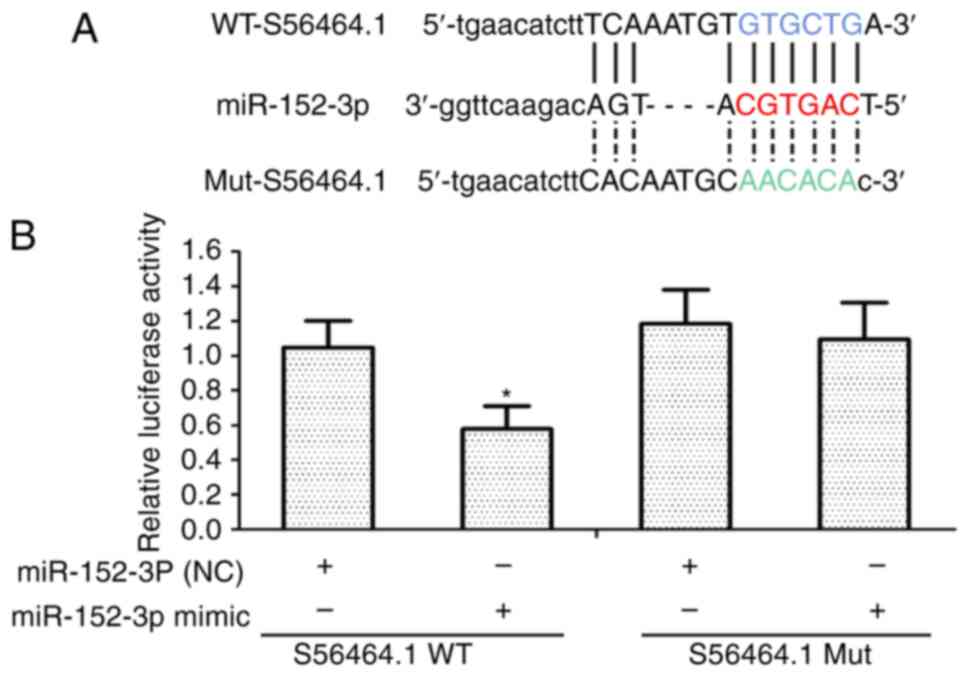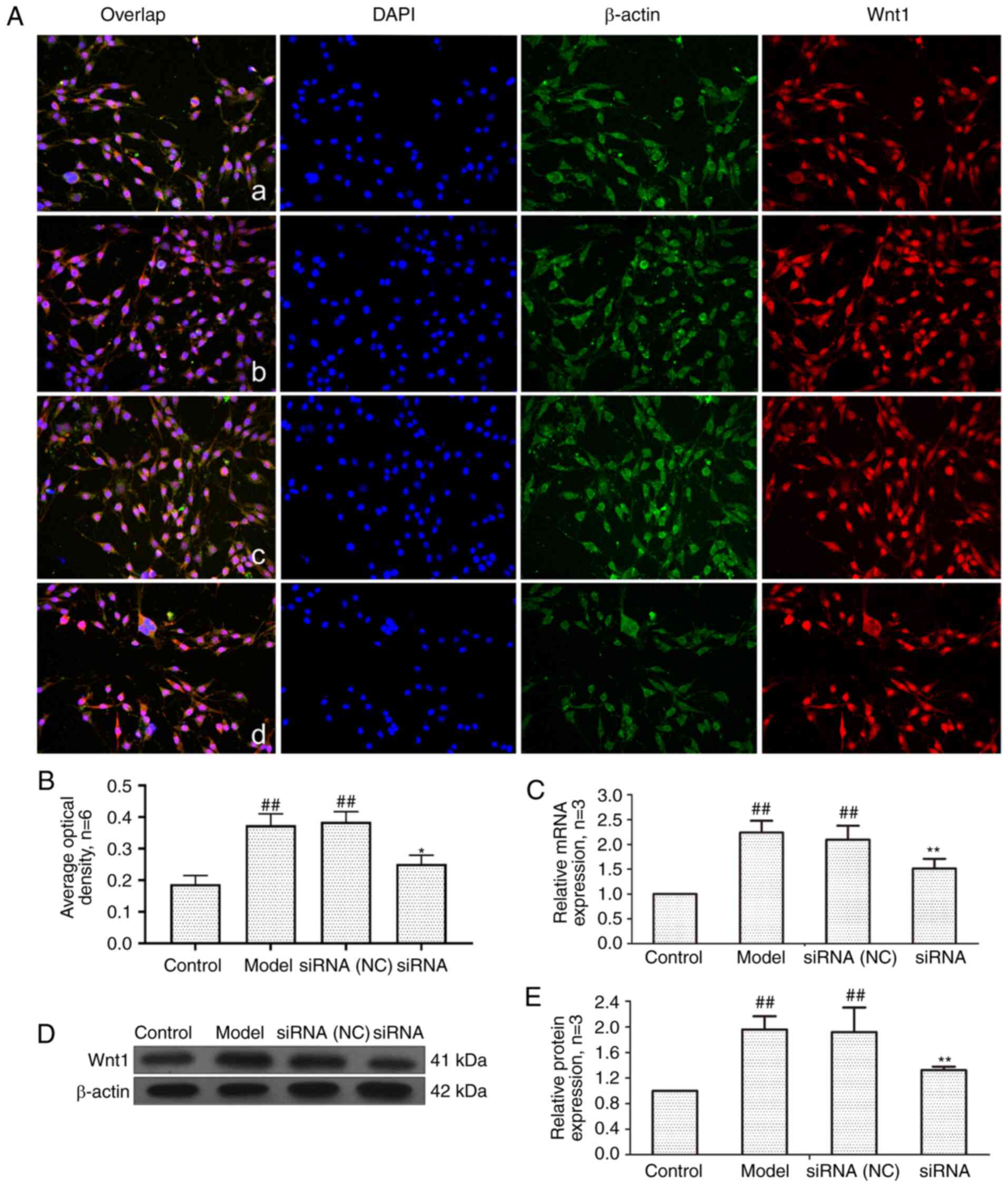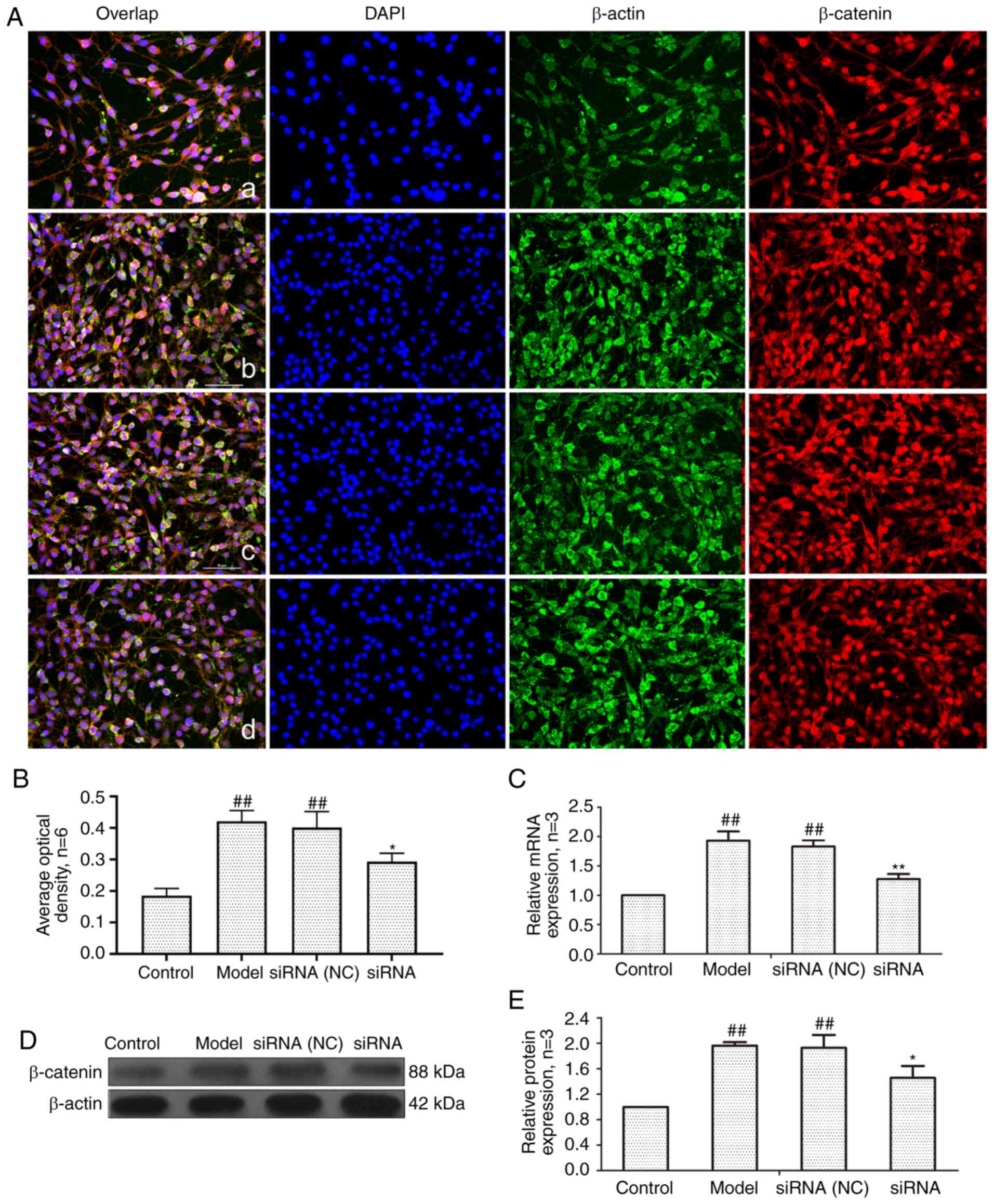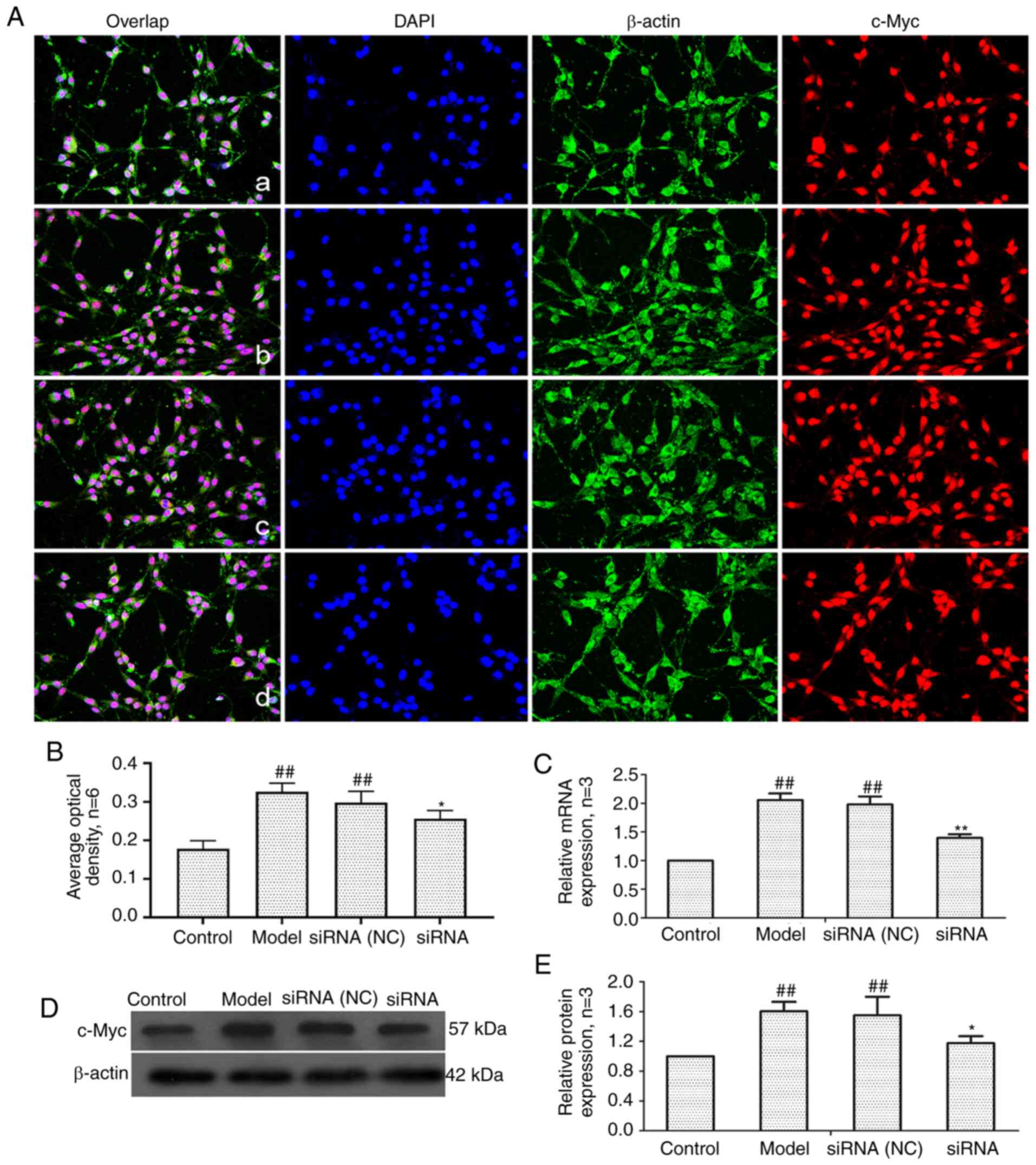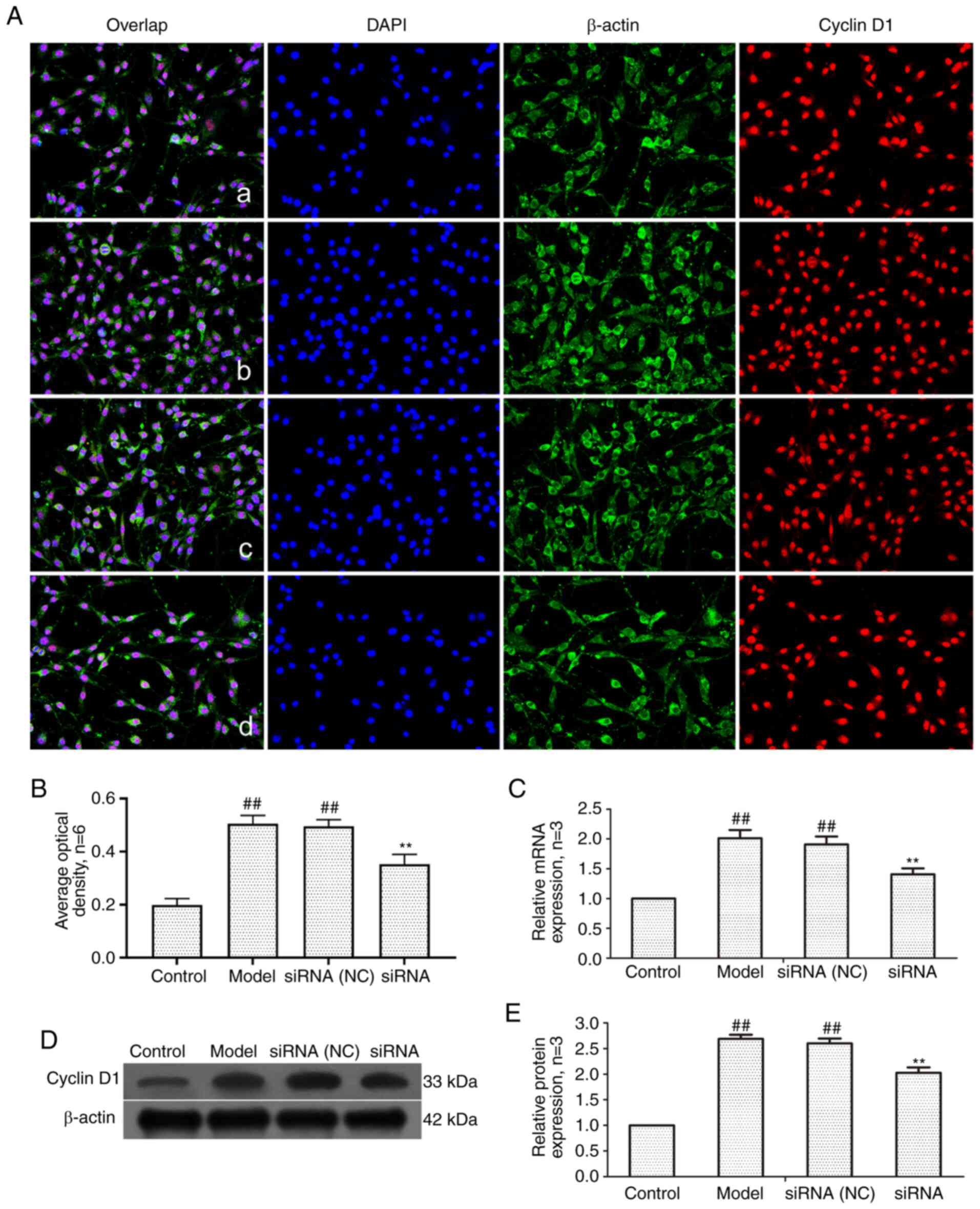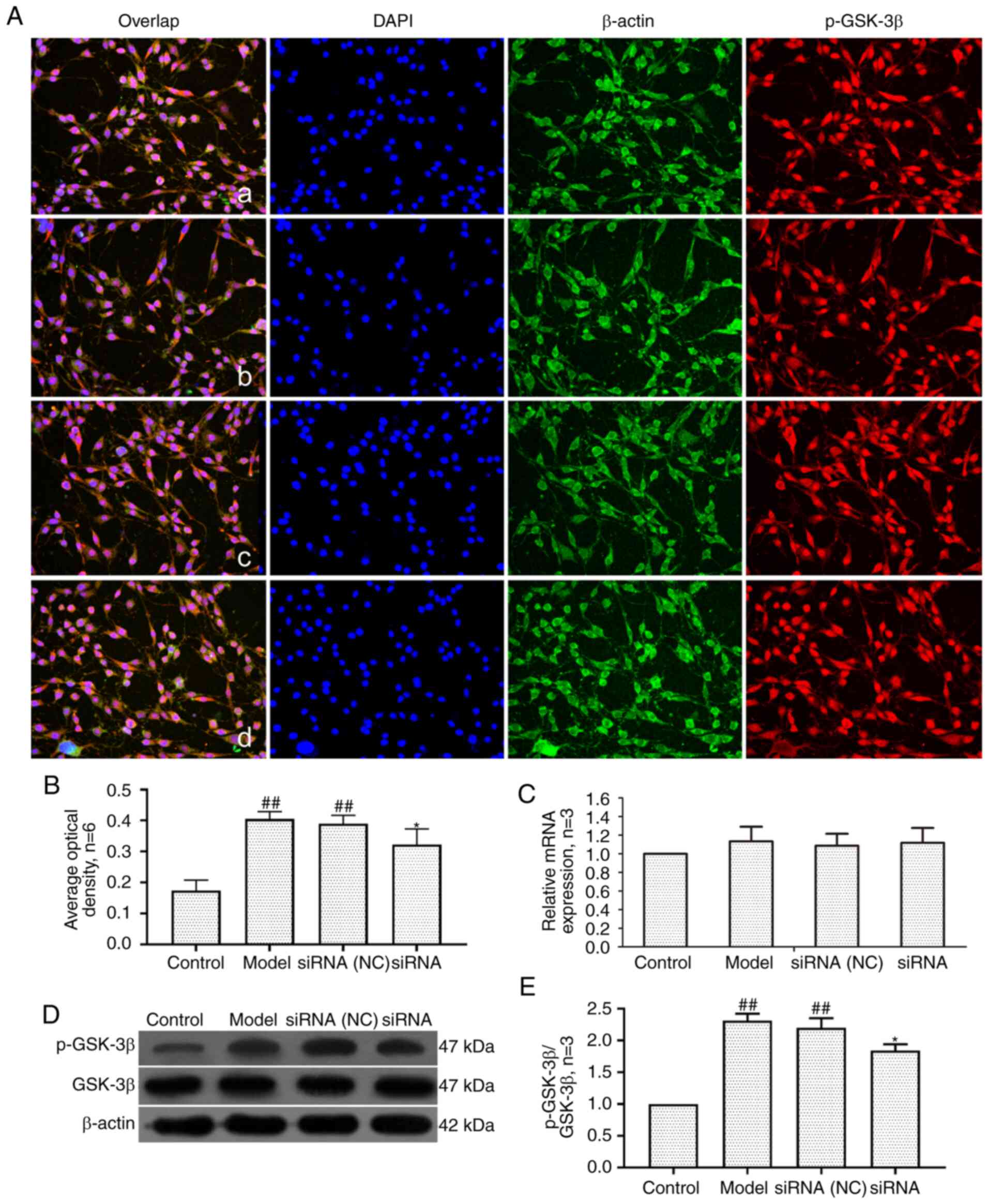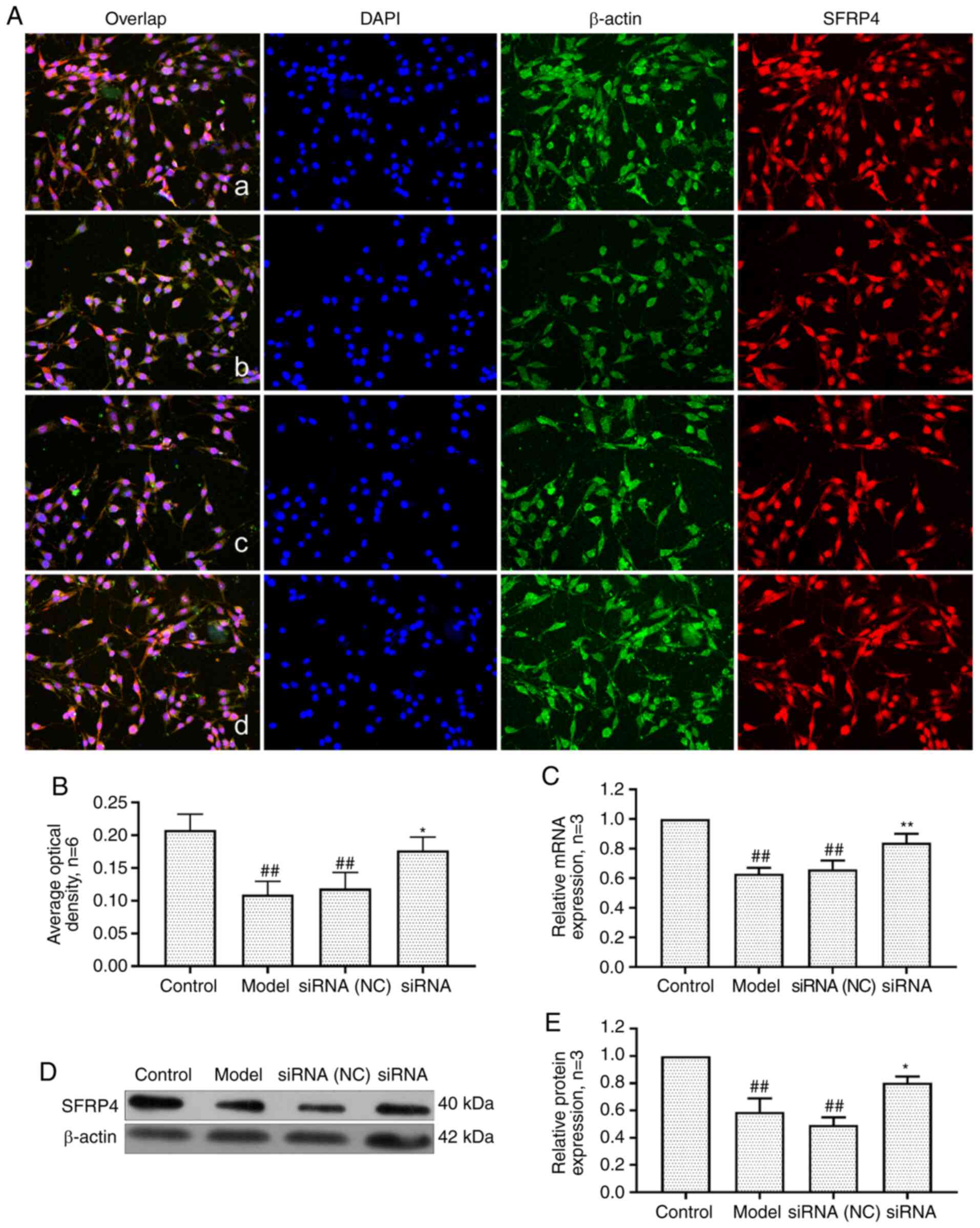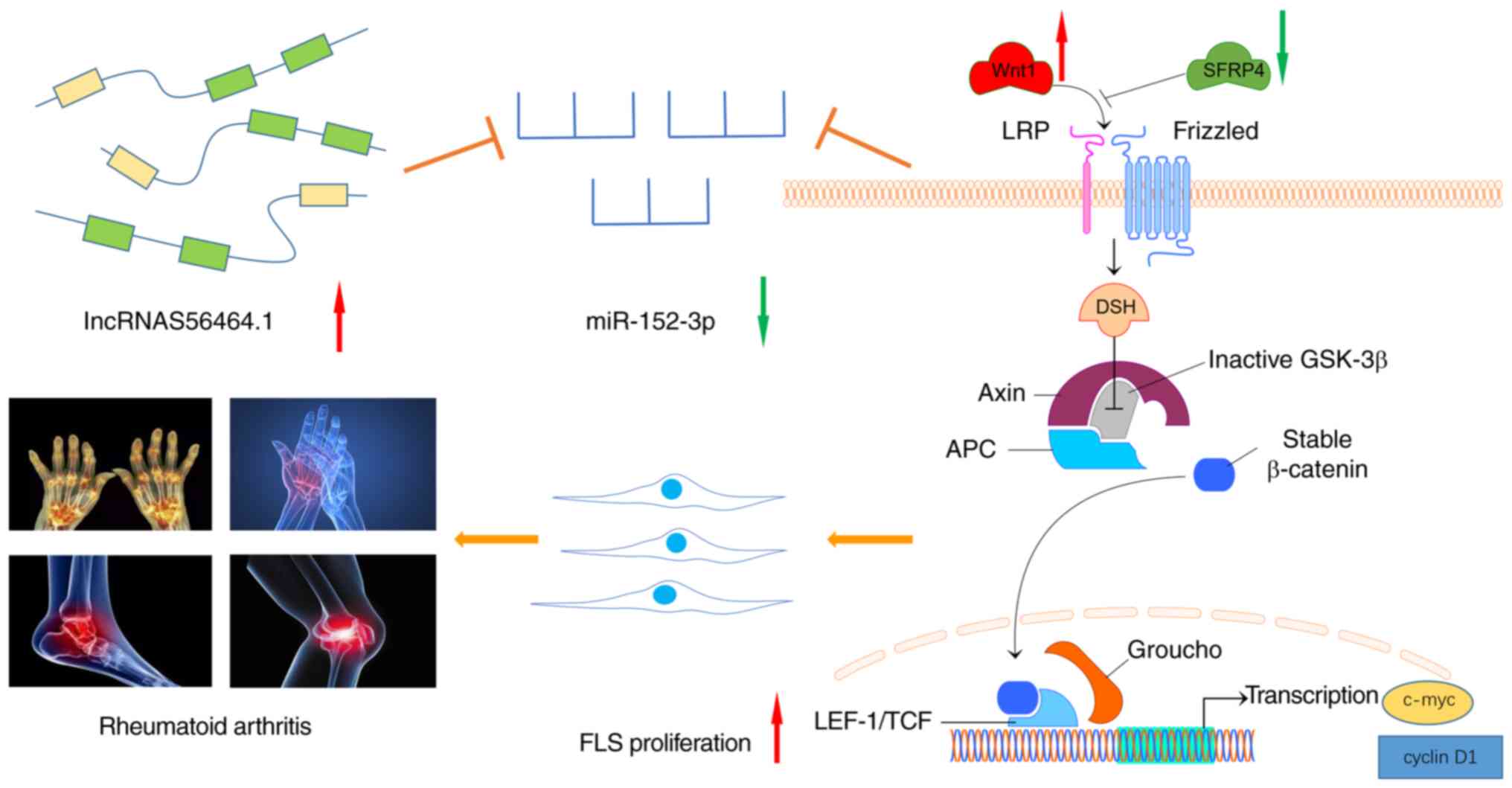|
1
|
Taylor PC: Aetiopathology of rheumatoid
arthritis. Medicine. 42:227–230. 2014. View Article : Google Scholar
|
|
2
|
Gutierrez MJ, Desiderio SV, Wang NY,
Darrah E, Cappelli L, Nino G, Jones M and Bingham CO III: Soluble
markers of antibody secreting cell function as predictors of
infection risk in rheumatoid arthritis. J Immunol Res.
2019:36582152019. View Article : Google Scholar : PubMed/NCBI
|
|
3
|
Onuora S: Rheumatoid arthritis: RA
synovium harbours distinct fibroblast subsets. Nat Rev Rheumatol.
14:2502018. View Article : Google Scholar : PubMed/NCBI
|
|
4
|
Collison J: Rheumatoid arthritis: Features
of synovium in RA remission revealed. Nat Rev Rheumatol.
12:3162016. View Article : Google Scholar : PubMed/NCBI
|
|
5
|
Liu R, Zhao P, Zhang Q, Che N, Xu L, Qian
J, Tan W and Zhang M: Adiponectin promotes fibroblast-like
synoviocytes producing IL-6 to enhance T follicular helper cells
response in rheumatoid arthritis. Clin Exp Rheumatol. 38:11–18.
2020.
|
|
6
|
Hanlon MM, Rakovich T, Cunningham CC,
Ansboro S, Veale DJ, Fearon U and McGarry T: STAT3 mediates the
differential effects of oncostatin M and TNFα on RA synovial
fibroblast and endothelial cell function. Front Immunol.
10:20562019. View Article : Google Scholar
|
|
7
|
Adawi M, Firas S and Blum A: Rheumatoid
arthritis and atherosclerosis. Isr Med Assoc J. 21:460–463.
2019.PubMed/NCBI
|
|
8
|
Ferreira CC, Campi-Azevedo AC,
Peruhype-Magalhāes V, Coelho-Dos-Reis JG, Antonelli LRDV, Torres K,
Freire LC, da Costa-Rocha IA, Oliveira ACV, Maia MLS, et al: Impact
of synthetic and biological immunomodulatory therapy on the
duration of 17DD yellow fever vaccine-induced immunity in
rheumatoid arthritis. Arthritis Res Ther. 21:752019. View Article : Google Scholar : PubMed/NCBI
|
|
9
|
Yu M, Hou J, Zheng M, Cao Y, Alike Y, Mi Y
and Zhu J: IL-21 gene rs6822844 polymorphism and rheumatoid
arthritis susceptibility. Biosci Rep. 40:BSR201914492020.
View Article : Google Scholar :
|
|
10
|
Bi X, Guo XH, Mo BY, Wang ML, Luo XQ, Chen
YX, Liu F, Olsen N, Pan YF and Zheng SG: lncRNA PICSAR promotes
cell proliferation, migration and invasion of fibroblast-like
synoviocytes by sponging miRNA-4701-5p in rheumatoid arthritis.
EBioMedicine. 50:408–420. 2019. View Article : Google Scholar : PubMed/NCBI
|
|
11
|
Liang J, Chen W and Lin J: LncRNA: An
all-rounder in rheumatoid arthritis. J Transl Int Med. 7:3–9. 2019.
View Article : Google Scholar : PubMed/NCBI
|
|
12
|
Fok ET, Davignon L, Fanucchi S and Mhlanga
MM: The lncRNA connection between cellular metabolism and
epigenetics in trained immunity. Front Immunol. 9:31842019.
View Article : Google Scholar : PubMed/NCBI
|
|
13
|
Cheng H, Sun M, Wang ZL, Wu Q, Yao J, Ren
G and Sun XL: lncRNA RMST-mediated miR-107 transcription promotes
OGD-induced neuronal apoptosis via interacting with hnRNPK.
Neurochem Int. 133:1046442020. View Article : Google Scholar
|
|
14
|
Guo M, Liu T, Zhang S and Yang L:
RASSF1-AS1 an antisense lncRNA of RASSF1A, inhibits the translation
of RASSF1A to exacerbate cardiac fibrosis in mice. Cell Biol Int.
43:1163–1173. 2019. View Article : Google Scholar
|
|
15
|
Liu J and Du W: lncRNA FENDRR attenuates
colon cancer progression by repression of SOX4 protein. Onco
Targets Ther. 12:4287–4295. 2019. View Article : Google Scholar : PubMed/NCBI
|
|
16
|
Jiang H, Ma R, Zou S, Wang Y, Li Z and Li
W: Reconstruction and analysis of the lncRNA-miRNA-mRNA network
based on competitive endogenous RNA reveal functional lncRNAs in
rheumatoid arthritis. Mol Biosyst. 13:1182–1192. 2017. View Article : Google Scholar : PubMed/NCBI
|
|
17
|
Salmena L, Poliseno L, Tay Y, Kats L and
Pandolfi PP: A ceRNA hypothesis: The Rosetta stone of a hidden RNA
language? Cell. 146:353–358. 2011. View Article : Google Scholar : PubMed/NCBI
|
|
18
|
Wu Y, Huang A, Li T, Su X, Ding H, Li H,
Qin X, Hou L, Zhao Q, Ge X, et al: miR-152 reduces human umbilical
vein endothelial cell proliferation and migration by targeting
ADAM17. FEBS Lett. 588:2063–2069. 2014. View Article : Google Scholar : PubMed/NCBI
|
|
19
|
Dang YW, Zeng J, He RQ, Rong MH, Luo DZ
and Chen G: Effects of miR-152 on cell growth inhibition, motility
suppression and apoptosis induction in hepatocellular carcinoma
cells. Asian Pac J Cancer Prev. 15:4969–4976. 2014. View Article : Google Scholar : PubMed/NCBI
|
|
20
|
Huang H, Hu M, Li P, Lu C and Li M:
miR-152 inhibits cell proliferation and colony formation of
CD133(+) liver cancer stem cells by targeting KIT. Tumour Biol.
36:921–928. 2015. View Article : Google Scholar
|
|
21
|
Miao CG, Qin D, Du CL, Ye H, Shi WJ, Xiong
YY, Zhang XL, Yu H, Dou JF, Ma ST, et al: DNMT1 activates the
canonical Wnt signaling in rheumatoid arthritis model rats via a
crucial functional crosstalk between miR-152 and the DNMT1, MeCP2.
Int Immunopharmacol. 28:344–353. 2015. View Article : Google Scholar : PubMed/NCBI
|
|
22
|
Jiang H, Liu J, Wang T, Gao JR, Sun Y,
Huang CB, Meng M and Qin XJ: Urinary metabolite profiling provides
potential differentiation to explore the mechanisms of
adjuvant-induced arthritis in rats. Biomed Chromatogr.
30:1397–1405. 2016. View
Article : Google Scholar : PubMed/NCBI
|
|
23
|
Zhu L, Li J, Guo L, Yu X, Wu D, Luo L, Zhu
L, Chen W, Chen C, Ye C and Zhang D: Activation of NALP1
inflammasomes in rats with adjuvant arthritis; a novel therapeutic
target of carboxyami-dotriazole in a model of rheumatoid arthritis.
Br J Pharmacol. 172:3446–3459. 2015. View Article : Google Scholar : PubMed/NCBI
|
|
24
|
Chang Y, Jia X, Sun X, Xu S, Wu Y, Zhang L
and Wei W: APRIL promotes proliferation, secretion and invasion of
fibroblast-like synoviocyte from rats with adjuvant induced
arthritis. Mol Immunol. 64:90–98. 2015. View Article : Google Scholar
|
|
25
|
Luo C, Liang JS, Gong J, Zhang HL, Feng
ZJ, Yang HT, Zhang HB and Kong QH: miRNA-31 over-expression improve
synovial cells apoptosis induced by RA. Bratisl Lek Listy.
119:355–360. 2018.PubMed/NCBI
|
|
26
|
Kragstrup TW, Sohn DH, Lepus CM, Onuma K,
Wang Q, Robinson WH and Sokolove J: Fibroblast-like synovial cell
production of extra domain A fibronectin associates with
inflammation in osteoarthritis. BMC Rheumatol. 3:462019. View Article : Google Scholar : PubMed/NCBI
|
|
27
|
Chen X, Wang Z, Tong F, Dong X, Wu G and
Zhang R: lncRNA UCA1 promotes gefitinib resistance as a ceRNA to
target FOSL2 by sponging miR-143 in non-small cell lung cancer. Mol
Ther Nucleic Acids. 19:643–653. 2020. View Article : Google Scholar : PubMed/NCBI
|
|
28
|
Präbst K, Engelhardt H, Ringgeler S and
Hübner H: Basic colorimetric proliferation assays: MTT, WST, and
Resazurin. Methods Mol Biol. 1601:1–17. 2017. View Article : Google Scholar : PubMed/NCBI
|
|
29
|
Deng H, Zheng M, Hu Z, Zeng X, Kuang N and
Fu Y: Effects of daphnetin on the autophagy signaling pathway of
fibroblast-like synoviocytes in rats with collagen-induced
arthritis (CIA) induced by TNF-α. Cytokine. 127:1549522020.
View Article : Google Scholar
|
|
30
|
Wang Y, Feng T, Duan S, Shi Y, Li S, Zhang
X and Zhang L: miR-155 promotes fibroblast-like synoviocyte
proliferation and inflammatory cytokine secretion in rheumatoid
arthritis by targeting FOXO3a. Exp Ther Med. 19:1288–1296.
2020.PubMed/NCBI
|
|
31
|
Kozomara A, Birgaoanu M and
Griffiths-Jones S: miRBase: From microRNA sequences to function.
Nucleic Acids Res. 47(D1): D155–D162. 2019. View Article : Google Scholar :
|
|
32
|
Rehmsmeier M, Steffen P, Hochsmann M and
Giegerich R: Fast and effective prediction of microRNA/target
duplexes. RNA. 10:1507–1517. 2004. View Article : Google Scholar : PubMed/NCBI
|
|
33
|
Li J and Liu S: LncRNA GAS5 suppresses
inflammatory responses and apoptosis of alveolar epithelial cells
by targeting miR-429/DUSP1. Exp Mol Pathol. 113:1043572020.
View Article : Google Scholar
|
|
34
|
Livak KJ and Schmittgen TD: Analysis of
relative gene expression data using real-time quantitative PCR and
the 2(-Delta Delta C(T)) method. Methods. 25:402–408. 2001.
View Article : Google Scholar
|
|
35
|
Zhu W, Xu J, Jiang C, Wang B, Geng M, Wu
X, Hussain N, Gao N, Han Y, Li D, et al: Pristane induces autophagy
in macrophages, promoting a STAT1-IRF1-TLR3 pathway and arthritis.
Clin Immunol. 175:56–68. 2017. View Article : Google Scholar
|
|
36
|
Kikuta S, Nakamura Y, Yamamura Y, Tamura
A, Homma N, Yanagawa Y, Tamura H, Kasahara J and Osanai M:
Quantitative activation-induced manganese-enhanced MRI reveals
severity of Parkinson's disease in mice. Sci Rep. 5:128002015.
View Article : Google Scholar : PubMed/NCBI
|
|
37
|
Ye Y, Gao X and Yang N: lncRNA ZFAS1
promotes cell migration and invasion of fibroblast-like
synoviocytes by suppression of miR-27a in rheumatoid arthritis. Hum
Cell. 31:14–21. 2018. View Article : Google Scholar
|
|
38
|
Javanmard AR, Dokanehiifard S, Bohlooli M
and Soltani BM: LOC646329 long non-coding RNA sponges miR-29b-1 and
regulates TGFβ signaling in colorectal cancer. J Cancer Res Clin
Oncol. 146:1205–1215. 2020. View Article : Google Scholar : PubMed/NCBI
|
|
39
|
Zhao X, Sun S, Xu J, Luo Y, Xin Y and Wang
Y: MicroRNA-152 inhibits cell proliferation of osteosarcoma by
directly targeting Wnt/β-catenin signaling pathway in a
DKK1-dependent manner. Oncol Rep. 40:767–774. 2018.PubMed/NCBI
|
|
40
|
Sun S, Xie F, Xu X, Cai Q, Zhang Q, Cui Z,
Zheng Y and Zhou J: Advanced oxidation protein products induce
S-phase arrest of hepatocytes via the ROS-dependent,
β-catenin-CDK2-mediated pathway. Redox Biol. 14:338–353. 2018.
View Article : Google Scholar
|
|
41
|
Tögel L, Nightingale R, Chueh AC,
Jayachandran A, Tran H, Phesse T, Wu R, Sieber OM, Arango D,
Dhillon AS, et al: Dual targeting of bromodomain and extraterminal
domain proteins, and WNT or MAPK signaling, inhibits c-MYC
expression and proliferation of colorectal cancer cells. Mol Cancer
Ther. 15:1217–1226. 2016. View Article : Google Scholar : PubMed/NCBI
|
|
42
|
Tetsuo F, Arioka M, Miura K, Kai M, Kubo
M, Igawa K, Tomooka K, Takahashi-Yanaga F, Nishimura F and Sasaguri
T: Differentiation-inducing factor-1 suppresses cyclin D1-induced
cell proliferation of MCF-7 breast cancer cells by inhibiting
S6K-mediated signal transducer and activator of transcription 3
synthesis. Cancer Sci. 110:3761–3772. 2019. View Article : Google Scholar : PubMed/NCBI
|
|
43
|
Dong ZC, Zhang D, Wang SB and Lin ZQ:
Target inhibition on GSK-3beta by miR-9 to modulate proliferation
and apoptosis of bladder cancer cells. Differentiation-inducing
factor-1 suppresses cyclin D1-induced cell proliferation of MCF-7
breast cancer cells by inhibiting S6K-mediated signal transducer
and activator of transcription 3 synthesis. Eur Rev Med Pharmacol
Sci. 22:3018–3026. 2018.PubMed/NCBI
|
|
44
|
Perumal V, Dharmarajan AM and Fox SA: The
Wnt regulator SFRP4 inhibits mesothelioma cell proliferation,
migration, and antagonizes Wnt3a via its netrin-like domain. Int J
Oncol. 51:362–368. 2017. View Article : Google Scholar : PubMed/NCBI
|
|
45
|
Madav Y, Barve K and Prabhakar B: Current
trends in theranostics for rheumatoid arthritis. Eur J Pharm Sci.
145:1052402020. View Article : Google Scholar : PubMed/NCBI
|
|
46
|
DeMizio DJ and Geraldino-Pardilla LB:
Autoimmunity and inflammation link to cardiovascular disease risk
in rheumatoid arthritis. Rheumatol Ther. 7:19–33. 2020. View Article : Google Scholar :
|
|
47
|
Yang CA, Li JP, Yen JC, Lai IL, Ho YC,
Chen YC, Lan JL and Chang JG: lncRNA NTT/PBOV1 axis promotes
monocyte differentiation and is elevated in rheumatoid arthritis.
Int J Mol Sci. 19:28062018. View Article : Google Scholar :
|
|
48
|
Samarpita S, Ganesan R and Rasool M:
Cyanidin prevents the hyperproliferative potential of
fibroblast-like synoviocytes and disease progression via targeting
IL-17A cytokine signalling in rheumatoid arthritis. Toxicol Appl
Pharmacol. 391:1149172020. View Article : Google Scholar : PubMed/NCBI
|
|
49
|
Xu Q, Yin S, Yao Y, Li X, Song B, Yang Y,
Liu Y, Chen R, Li J, Ma T, et al: MAST3 modulates the inflammatory
response and proliferation of fibroblast-like synoviocytes in
rheumatoid arthritis. Int Immunopharmacol. 77:1059002019.
View Article : Google Scholar : PubMed/NCBI
|
|
50
|
Wang Y, Jiao T, Fu W, Zhao S, Yang L, Xu N
and Zhang N: miR-410-3p regulates proliferation and apoptosis of
fibroblast-like synoviocytes by targeting YY1 in rheumatoid
arthritis. Biomed Pharmacother. 119:1094262019. View Article : Google Scholar : PubMed/NCBI
|
|
51
|
Zhang X, Wang W, Zhu W, Dong J, Cheng Y,
Yin Z and Shen F: Mechanisms and functions of long non-coding RNAs
at multiple regulatory levels. Int J Mol Sci. 20:55732019.
View Article : Google Scholar :
|
|
52
|
Jiang Z, Li L, Hou Z, Liu W, Wang H, Zhou
T, Li Y and Chen S: lncRNA HAND2-AS1 inhibits 5-fluorouracil
resistance by modulating miR-20a/PDCD4 axis in colorectal cancer.
Cell Signal. 66:1094832020. View Article : Google Scholar
|
|
53
|
Zhao CC, Jiao Y, Zhang YY, Ning J, Zhang
YR, Xu J, Wei W and Kang-Sheng G: lnc SMAD5-AS1 as ceRNA inhibit
proliferation of diffuse large B cell lymphoma via Wnt/β-catenin
pathway by sponging miR-135b-5p to elevate expression of APC. Cell
Death Dis. 10:2522019. View Article : Google Scholar
|
|
54
|
Wang H, Wang G, Gao Y, Zhao C, Li X, Zhang
F, Jiang C and Wu B: lnc-SNHG1 activates the TGFBR2/SMAD3 and
RAB11A/Wnt/β-catenin pathway by sponging MiR-302/372/373/520 in
invasive pituitary tumors. Cell Physiol Biochem. 48:1291–1303.
2018. View Article : Google Scholar
|
|
55
|
Li Y, Zou L, Yang X, Chu L, Ni J, Chu X,
Guo T and Zhu Z: Identification of lncRNA, microRNA, and
mRNA-associated CeRNA network of radiation-induced lung injury in a
mice model. Dose-Response. 17:15593258198910122019. View Article : Google Scholar : PubMed/NCBI
|
|
56
|
Liu J, Li H, Zheng B, Sun L, Yuan Y and
Xing C: Competitive endogenous RNA (ceRNA) regulation network of
lncRNA-miRNA-mRNA in colorectal carcinogenesis. Dig Dis Sci.
64:1868–1877. 2019. View Article : Google Scholar : PubMed/NCBI
|
|
57
|
Wang J, Yin J, Wang X, Liu H, Hu Y, Yan X,
Zhuang B, Yu Z and Han S: Changing expression profiles of mRNA,
lncRNA, circRNA, and miRNA in lung tissue reveal the
pathophysiological of bronchopulmonary dysplasia (BPD) in mouse
model. J Cell Biochem. 120:9369–9380. 2019. View Article : Google Scholar : PubMed/NCBI
|
|
58
|
Friedrich M, Pracht K, Mashreghi MF, Jäck
HM, Radbruch A and Seliger B: The role of the miR-148/-152 family
in physiology and disease. Eur J Immunol. 47:2026–2038. 2017.
View Article : Google Scholar : PubMed/NCBI
|
|
59
|
Miao CG, Yang YY, He X, Huang C, Huang Y,
Qin D, Du CL and Li J: MicroRNA-152 modulates the canonical Wnt
pathway activation by targeting DNA methyltransferase 1 in
arthritic rat model. Biochimie. 106:149–156. 2014. View Article : Google Scholar : PubMed/NCBI
|
|
60
|
Sun LB, Zhao SF, Zhu JJ, Han Y and Shan
TD: Long noncoding RNA UCID sponges miR-152-3p to promote
colorectal cancer cell migration and invasion via the Wnt/β-catenin
signaling pathway. Oncol Rep. 44:1194–1205. 2020. View Article : Google Scholar : PubMed/NCBI
|
|
61
|
Miao CG, Yang YY, He X, Li XF, Huang C,
Huang Y, Zhang L, Lv XW, Jin Y and Li J: Wnt signaling pathway in
rheumatoid arthritis, with special emphasis on the different roles
in synovial inflammation and bone remodeling. Cell Signal.
25:2069–2078. 2013. View Article : Google Scholar : PubMed/NCBI
|
|
62
|
Wu J, Fan W, Ma L and Geng X: miR-708-5p
promotes fibroblast-like synoviocytes' cell apoptosis and
ameliorates rheumatoid arthritis by the inhibition of
Wnt3a/β-catenin pathway. Drug Des Devel Ther. 12:3439–3447. 2018.
View Article : Google Scholar :
|
|
63
|
Zhang LH, Wang Y, Fan QQ, Liu YK, Li LH,
Qi XW, Mao Y and Hua D: Up-regulated Wnt1-inducible signaling
pathway protein 1 correlates with poor prognosis and drug
resistance by reducing DNA repair in gastric cancer. World J
Gastroenterol. 25:5814–5825. 2019. View Article : Google Scholar : PubMed/NCBI
|
|
64
|
Malysheva K, de Rooij K, Lowik CW, Baeten
DL, Rose-John S, Stoika R and Korchynskyi O: Interleukin 6/Wnt
interactions in rheumatoid arthritis: Interleukin 6 inhibits Wnt
signaling in synovial fibroblasts and osteoblasts. Croat Med J.
57:89–98. 2016. View Article : Google Scholar : PubMed/NCBI
|
|
65
|
Sen M, Reifert J, Lauterbach K, Wolf V,
Rubin JS, Corr M and Carson DA: Regulation of fibronectin and
metalloproteinase expression by Wnt signaling in rheumatoid
arthritis synoviocytes. Arthritis Rheum. 46:2867–2877. 2002.
View Article : Google Scholar : PubMed/NCBI
|
|
66
|
Nakamura Y, Nawata M and Wakitani S:
Expression profiles and functional analyses of Wnt-related genes in
human joint disorders. Am J Pathol. 167:97–105. 2005. View Article : Google Scholar : PubMed/NCBI
|
|
67
|
Wang W, Guo P, Chen M, Chen D, Cheng Y and
He L: FOXM1/LINC00152 feedback loop regulates proliferation and
apoptosis in rheumatoid arthritis fibroblast-like synoviocytes via
Wnt/β-catenin signaling pathway. Biosci Rep. 40:BSR201919002020.
View Article : Google Scholar
|
|
68
|
Yoshioka R, Kita Y, Nagahira A, Manno A,
Makita N, Tomita U and Murakawa M: Quantitative analysis of
cadherin-11 and β-catenin signalling during proliferation of
rheumatoid arthritis-derived synovial fibroblast cells. J Pharm
Pharmacol. 67:1075–1082. 2015. View Article : Google Scholar : PubMed/NCBI
|
|
69
|
Ramanan M, Pilli VS, Aradhyam GK and Doble
M: Transcriptional regulation of microsomal prostaglandin E
synthase 1 by the proto-oncogene, c-myc, in the pathogenesis of
inflammation and cancer. Biochem Biophys Res Commun. 482:556–562.
2017. View Article : Google Scholar
|
|
70
|
Liu Q, Loo WT, Sze SC and Tong Y: Curcumin
inhibits cell proliferation of MDA-MB-231 and BT-483 breast cancer
cells mediated by down-regulation of NFkappaB, cyclinD and MMP-1
transcription. Phytomedicine. 16:916–922. 2009. View Article : Google Scholar : PubMed/NCBI
|
|
71
|
Wang H, Jia XZ, Sui CJ, Zhao YP, Mei YF,
Zheng YN and Zhang ZY: Effects of thapsigargin on the proliferation
and survival of human rheumatoid arthritis synovial cells.
ScientificWorldJournal. 2014:6054162014.PubMed/NCBI
|
|
72
|
Huang XY, Zhang XM, Chen FH, Zhou LL, Deng
XF, Liu YJ and Li XJ: Anti-proliferative effect of recombinant
human endostatin on synovial fibroblasts in rats with adjuvant
arthritis. Eur J Pharmacol. 723:7–14. 2014. View Article : Google Scholar
|
|
73
|
Zhu B, Zhang S, Meng N, Zhang H, Yuan S
and Zhang J: Long non-coding RNA RNCR3 promotes glioma progression
involving the Akt/GSK-3β pathway. Oncol Lett. 18:6315–6322.
2019.PubMed/NCBI
|
|
74
|
Li S, Oh YT, Yue P, Khuri FR and Sun SY:
Inhibition of mTOR complex 2 induces GSK3/FBXW7-dependent
degradation of sterol regulatory element-binding protein 1 (SREBP1)
and suppresses lipogenesis in cancer cells. Oncogene. 35:642–650.
2016. View Article : Google Scholar
|
|
75
|
Pronobis MI, Rusan NM and Peifer M: A
novel GSK3-regulated APC: Axin interaction regulates Wnt signaling
by driving a catalytic cycle of efficient βcatenin destruction.
Elife. 4:e080222015. View Article : Google Scholar
|
|
76
|
Guan H, Zhang Y, Gao S, Bai L, Zhao S,
Cheng XW, Fan J and Liu E: Differential patterns of secreted
frizzled-related protein 4 (SFRP4) in adipocyte differentiation:
Adipose depot specificity. Cell Physiol Biochem. 46:2149–2164.
2018. View Article : Google Scholar : PubMed/NCBI
|
|
77
|
Ghoshal A and Ghosh SS: Antagonizing
canonical Wnt signaling pathway by recombinant human sFRP4 purified
from E. coli and its implications in cancer therapy. Mol Cell
Biochem. 418:119–135. 2016. View Article : Google Scholar : PubMed/NCBI
|
|
78
|
Haraguchi R, Kitazawa R, Mori K, Tachibana
R, Kiyonari H, Imai Y, Abe T and Kitazawa S: sFRP4-dependent Wnt
signal modulation is critical for bone remodeling during postnatal
development and age-related bone loss. Sci Rep. 6:251982016.
View Article : Google Scholar : PubMed/NCBI
|















